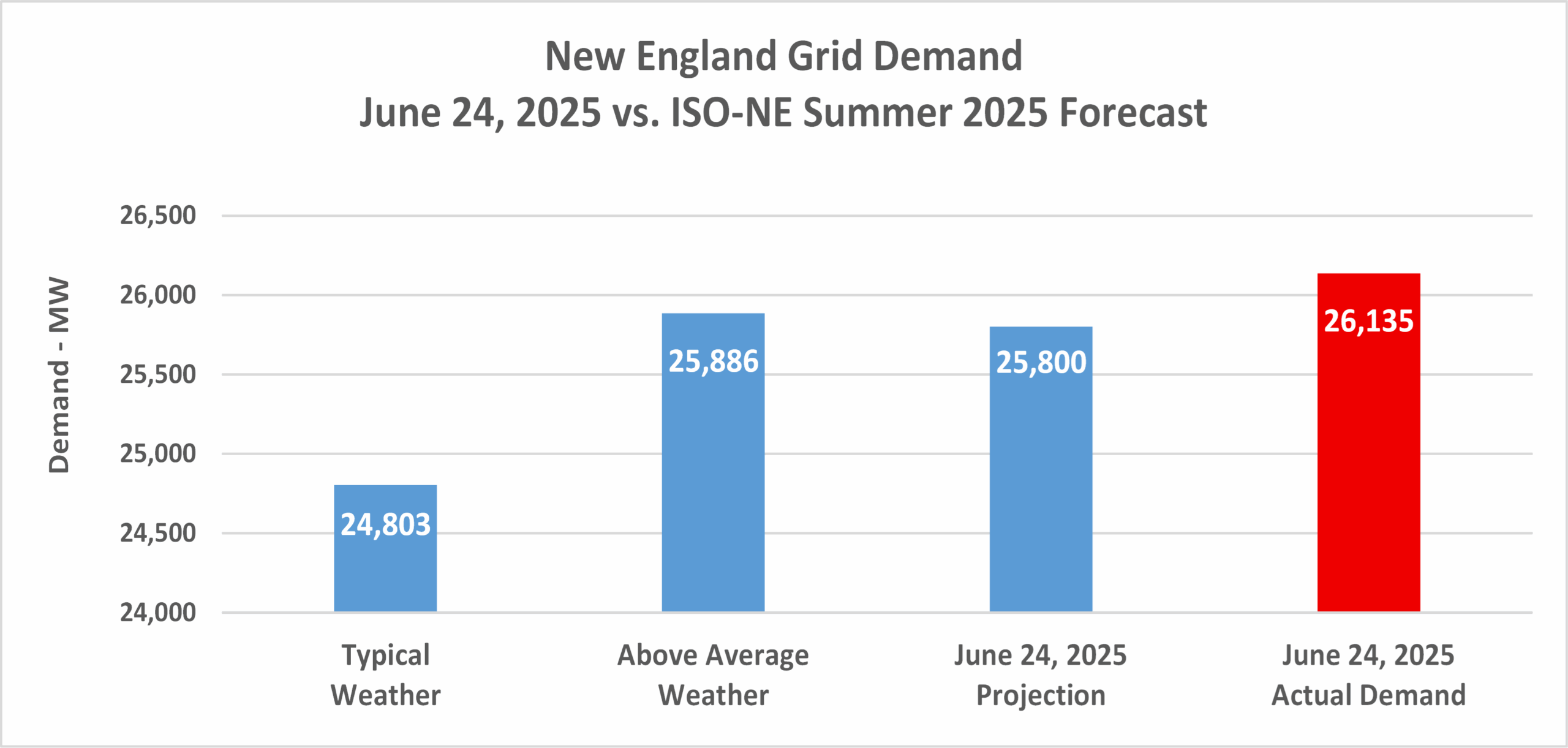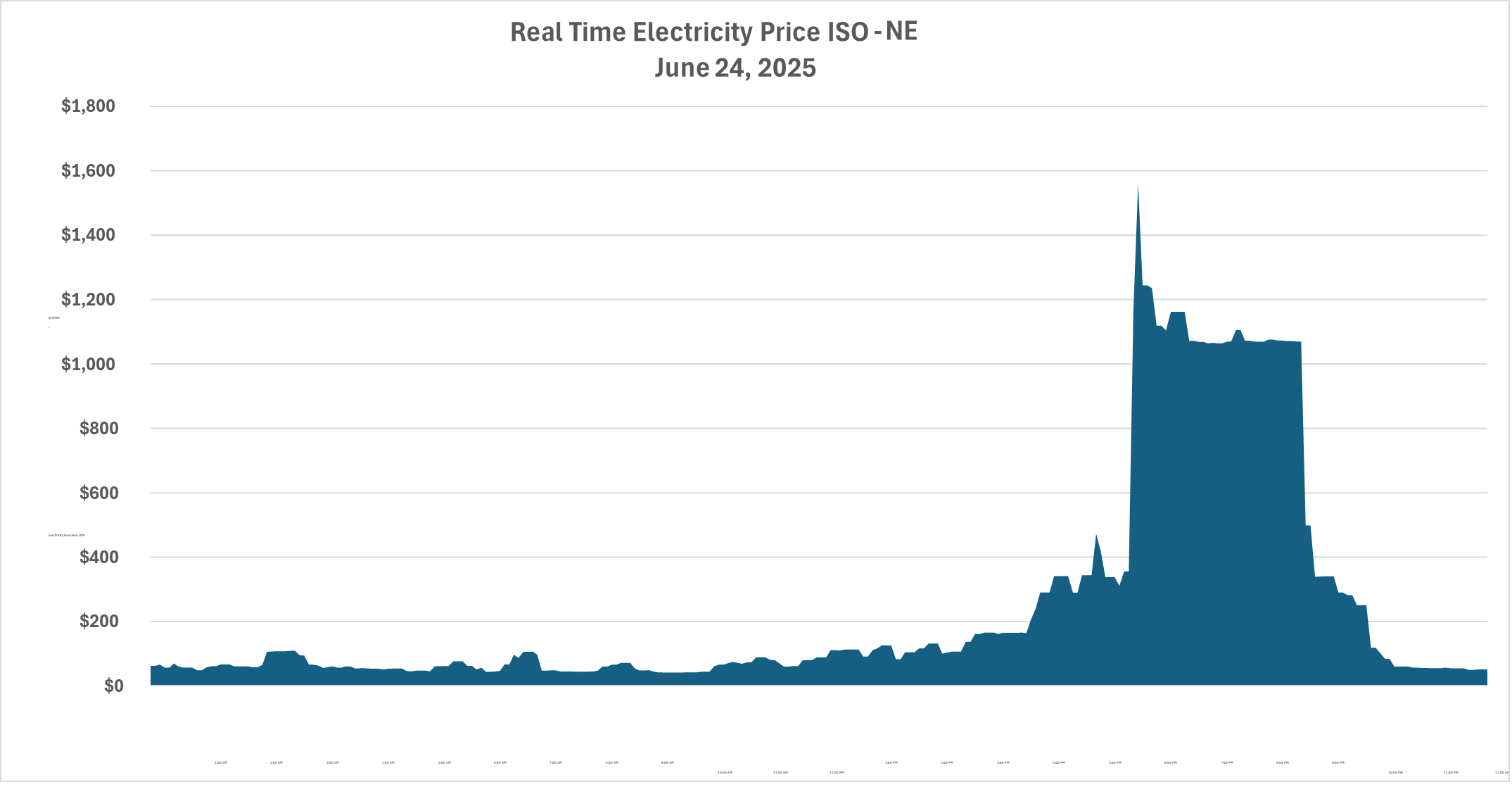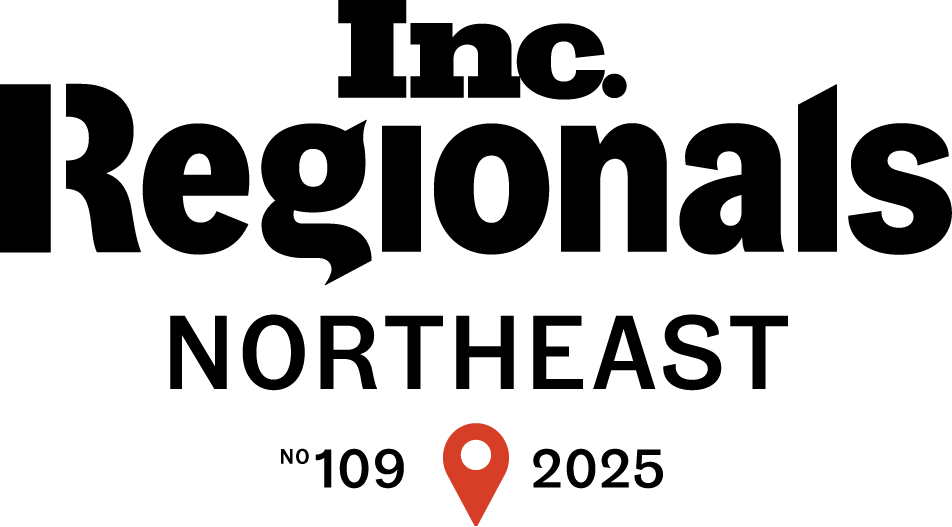How June 24 Became the Peak Day
Eight days after our June 16th newsletter article indicating that January 21st was the peak at that point, we hit what would result in the Annual System Peak on Tuesday June 24th. June 22nd was the start of a 4-day heat wave peaking on June 24th with temperatures exceeding 100 degrees and dew points in the high 60s/low 70s. It was the first curtailment notice we sent to start off the summer and it would be the last, and the first year with a single notice going back to 2009. During the summer of 2024, Freedom Energy sent seven curtailment notices from June19th through July 17th.
Peaking at 26,135 MW from 6-7 pm (initially reported at 26,024 MW) June 24th exceeded ISO-NE’s summer forecast for above average weather as well as the projected demand for the day. It was also the highest peak since 2013.

ISO-NE Actions to Maintain Grid Reliability
On June 24, ISO-NE implemented a series of emergency measures to keep the grid stable:
- Demand response was dispatched.
- ISO-NE implemented OP 4 Action 5 which considers the purchase of emergency capacity from neighboring control areas, and determined that a Capacity Scarcity Condition was occurring in one or more capacity zones at 5:50 pm.
- A capacity deficiency alert was issued after 2,550 MW of generating capacity became unexpectedly unavailable, causing the region’s operating reserves to drop below required levels.
- Electricity exports to neighboring regions were curtailed.
- Power plant operators were notified to postpone any planned testing or maintenance that could affect output.
- Reserve resources were activated to boost supply.
Wholesale electricity prices (energy-only) soared between 5:30 and 6:00 pm and reached close to $1,600/MWh by 6:00 pm. The price averaged $240/MWh for the day (24 cents per kilowatt-hour). In comparison, the average for the year to date is $63/MWh.

Demand Trends for the Rest of Summer
For the remainder of the summer through September 12th with days that reached into the mid-90s 12 to13 times, demand never really came close to June 24th except for July 29th with temperatures that edged close to 100 degrees.
What to expect for the Summer of 2026 and Beyond
Continuous changes and surprises. The summer of 2023 saw the first Annual System Peak outside of June, July or August hitting on September 7th. With the expectation that the Peak will gradually shift to the Winter as a result of electrification, another September peak is not out of the question.
ISO-NE has redesigned the Forward Capacity Market that will take effect for the Capacity Period beginning June 1, 2028. The Forward Capacity Auctions that were previously held three years in advance of the capacity period and defined a single clearing price for the 12-month period June – May, will now be split into two seasonal auctions to reflect a winter and summer period, as well as being held one month in advance of the capacity period. As a result, capacity tags will be set twice annually, and of course necessitating the need to send curtailment notices for both periods.
Additional information regarding the FCM changes will be provided as it becomes available.
Annual System Peak & Voluntary Curtailment Program — Background
The annual system peak is the single hour in the calendar year when electricity demand throughout New England is highest. That hour is most likely to occur during the summer on the hottest and most humid weekday in late afternoon (see above for future changes). Each year we send curtailment notices during the summer to customers when we think the peak may occur, recommending curtailment between 4-7 pm.
The peak hour establishes each electricity account’s capacity tag based on its load during that hour, and becomes effective the following year beginning June 1 for a 12-month period. The annual system peak is essentially the sum of the capacity tags for all accounts combined. ISO-NE bases its planning for electricity generation to ensure adequate supply during that peak demand hour. The cost of capacity is established through the Forward Capacity Market auction process.
Every account’s electricity supply cost includes a charge for capacity based on its capacity tag. By curtailing during that peak hour, an account can reduce its capacity tag, and thus the associated cost going forward (depending on the timing and term of their retail supply contract). Additionally, curtailment during that peak hour helps ISO-NE to reduce the need for new future generation.
Meet the Writer

Howard Plante
Freedom Energy Logistics
Vice President of Procurement
Howard Plante is a seasoned professional in the energy industry with a comprehensive background in environmental and energy engineering. As Vice President of Procurement at Freedom Energy Logistics, he brings a wealth of experience in regulatory compliance, technical analysis, and strategic planning to his role, where he is dedicated to advocating for clients and advancing the company’s enterprise efforts on their behalf.








Connect With Us